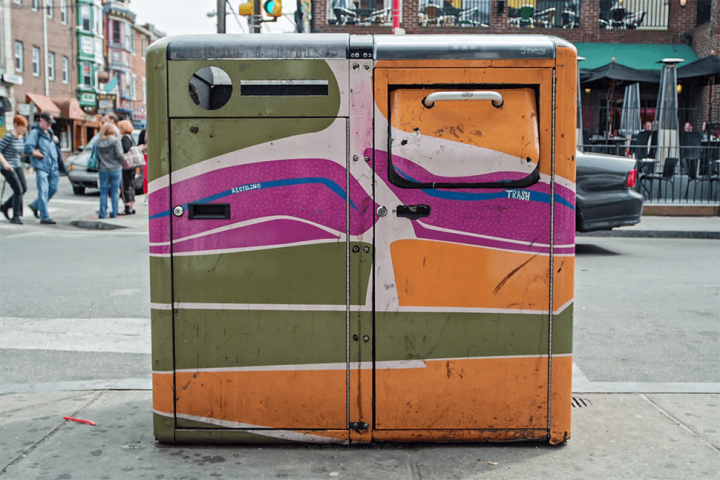
City trash cans don’t have to be stupid
If there’s a better name for a trash can than Bigbelly, we’d like to hear it. The company produces smart trash cans, and there’s a chance you may have already deposited some litter inside one of Bigbelly’s receptacles already, as they’re being deployed around the world right now. What you may not have known at the time is that inside is a Qualcomm Gobi 3G modem with GPS, and it’s the heart of Bigbelly’s smartness.
Imagine a city with thousands of trash cans, all connected to a central point, providing live information on which ones need emptying, where more bins are needed, and even if the inside is getting hot and smelly. This is the functionality the Qualcomm chip brings to each Bigbelly smart trash can. It’s powered by a large solar panel on the top, which powers an internal compactor to make the most out of the space. Even the door can be remotely locked when it gets full, or potentially in the event of a security alert.
Information from each one is displayed at a central office, where collectors can be deployed to where they’re most needed, instead of trudging round emptying bins that aren’t yet full. There are considerable time, effort, and money-saving opportunities to be had by optimizing routes and collecting historical data on usage. But ultimately, it’s us who will benefit most, because when we find somewhere to put our rubbish, there’s a strong chance it won’t be overflowing.
Because Bigbelly cans are network connected, teams can access the data on the move, react to any emergencies, and adjust routes accordingly. When it’s laid out like this, connecting everyday dumb devices to the Internet suddenly makes complete sense.
LED street lights use chips to listen for gunshots
Many cities are already changing old sodium street lights for LED lighting systems, and Qualcomm has developed an add-on unit which retroactively updates these new lights with a Snapdragon chip and a 3G modem. The principle is the same as the trash cans – these connected lights can inform engineers when they’ve stopped working, rather than relying on roaming teams or public assistance.
If these microphones can hear and locate gunshots, presumably they can hear our conversations too.
Things do take a turn for the worst if you’re paranoid, though. Qualcomm’s retrofitted unit incorporates sensitive microphones which can recognize the sound of gunshots. Because the lights are all connected, the near-exact location of the shot can be pinpointed and authorities alerted before anyone has the chance to pick up the phone to call the police. An important, and potentially life-saving feature.
However, if these microphones can hear and locate gunshots, presumably they can hear our conversations too, which has caused lots of hand-wringing amongst those worried about privacy and Big Brother.
Your car could also use the same chip as your phone
Qualcomm wants to dominate the connected car market in the same way it does smartphones, but needs to catch up with Nvidia first. To demonstrate its ability, Qualcomm recently showed a concept Cadillac with the automotive-only Snapdragon 602A chip inside, which links all sorts of sensors, cameras, and modems together. The car runs Android, and is used to demonstrate digital mirrors, blind-spot eliminating cameras, gesture controls, and object avoidance.
It’s here where things get cool. Using a Wi-Fi based Dedicated Short Range Communications (DRSC) system, it allows connected cars to “talk” to each other, regardless of conditions or the time of day. These car conversations could increase safety and decrease our chances of getting run down when we aren’t paying attention. Like Batman in The Dark Knight, the DRSC system can “see” your smartphone while you’re wandering about by detecting these Wi-Fi signals, and alert drivers to your presence even if they can’t physically see you, or if vision is blocked by cars in front.
It works both ways too, and alerts can show up on the pedestrian’s smartphone if a nearby car is put into reverse gear, or is coming around a blind corner. Beyond this, the DRSC system could also be used to alert drivers when a car ahead has an accident, or swerves to avoid a hazard. It could also connect with the smart streetlights we talked about earlier, to temporarily illuminate stretches of road which aren’t used very often.
This is just the beginning…
The Internet of Things is hard to define, and examples of how it can integrate into our daily lives – that make sense – are often hard to come by. Qualcomm’s work illustrates how everything getting connected can make life easier, whether you’re in your car, walking down the street, or just going about your business. Perhaps most impressively, it’s essentially all powered by the same chip as the phone in your pocket.


